Seychelles Flag Meaning
A flag of five oblique bands radiating from the bottom hoist corner: blue, yellow, red, white, and green. The design symbolizes a dynamic, forward-looking nation embracing unity and diversity.
- Continent
- Africa
- Adopted
- 1996
- Ratio
- 1:2
- Colors
- blue, yellow, red, white, green
- Designer
- Local designers (third national flag since independence)
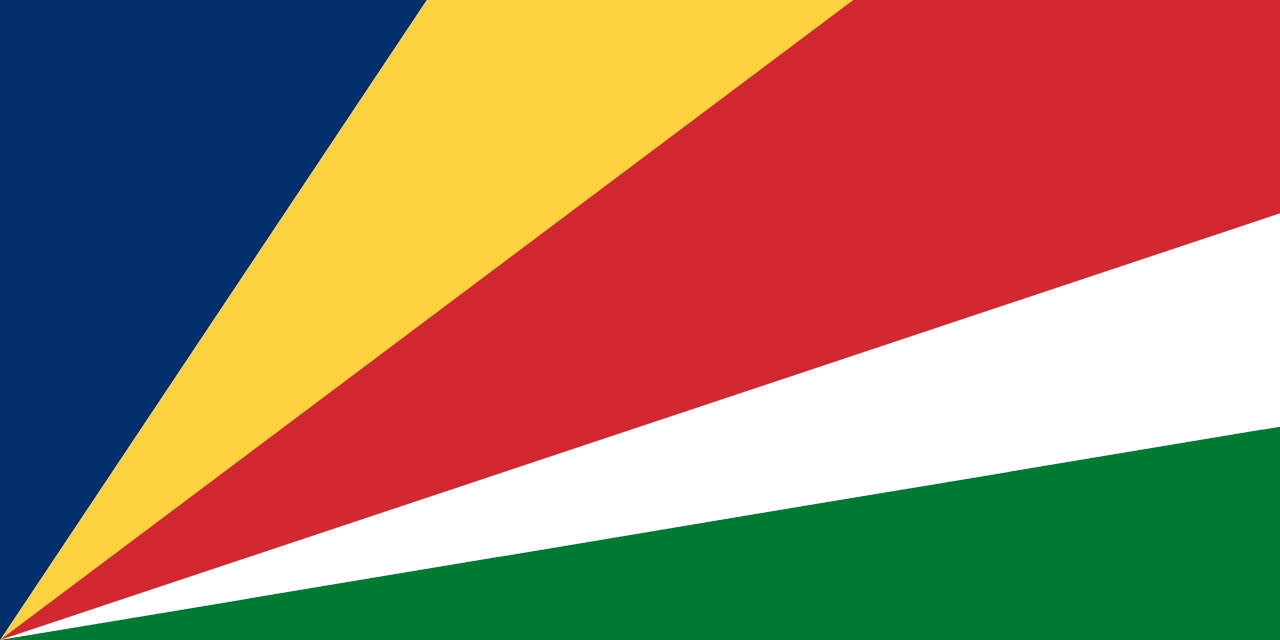
Symbolism
Blue Band: Represents the sky and the surrounding Indian Ocean.
Yellow Band: Symbolizes the sun which brings light and life.
Red Band: Stands for the people and their determination to move forward in unity and love.
White Band: Represents social justice and harmony.
Green Band: Represents the land and natural environment of the islands.
History
- 1770: First French settlers arrived on the uninhabited islands.
- 1814: Britain took control of Seychelles after the Napoleonic Wars.
- 1976: Gained independence from Britain and adopted its first national flag.
- 1977: A coup led to a one-party socialist state and a second flag.
- 1993: Multi-party democracy was restored.
- 1996: The current flag was adopted to represent unity among political groups and the nation’s progress.
Trivia
- Seychelles consists of 115 islands scattered in the Indian Ocean.
- It is home to some of the rarest species on Earth, including the giant Aldabra tortoise and the coco de mer palm.
- The colorful flag symbolizes a young nation moving forward in unity.
- Tourism and fishing are the country’s main economic sectors.
- Seychelles has one of the world’s smallest populations of any independent state, with under 120,000 people.
Related Countries
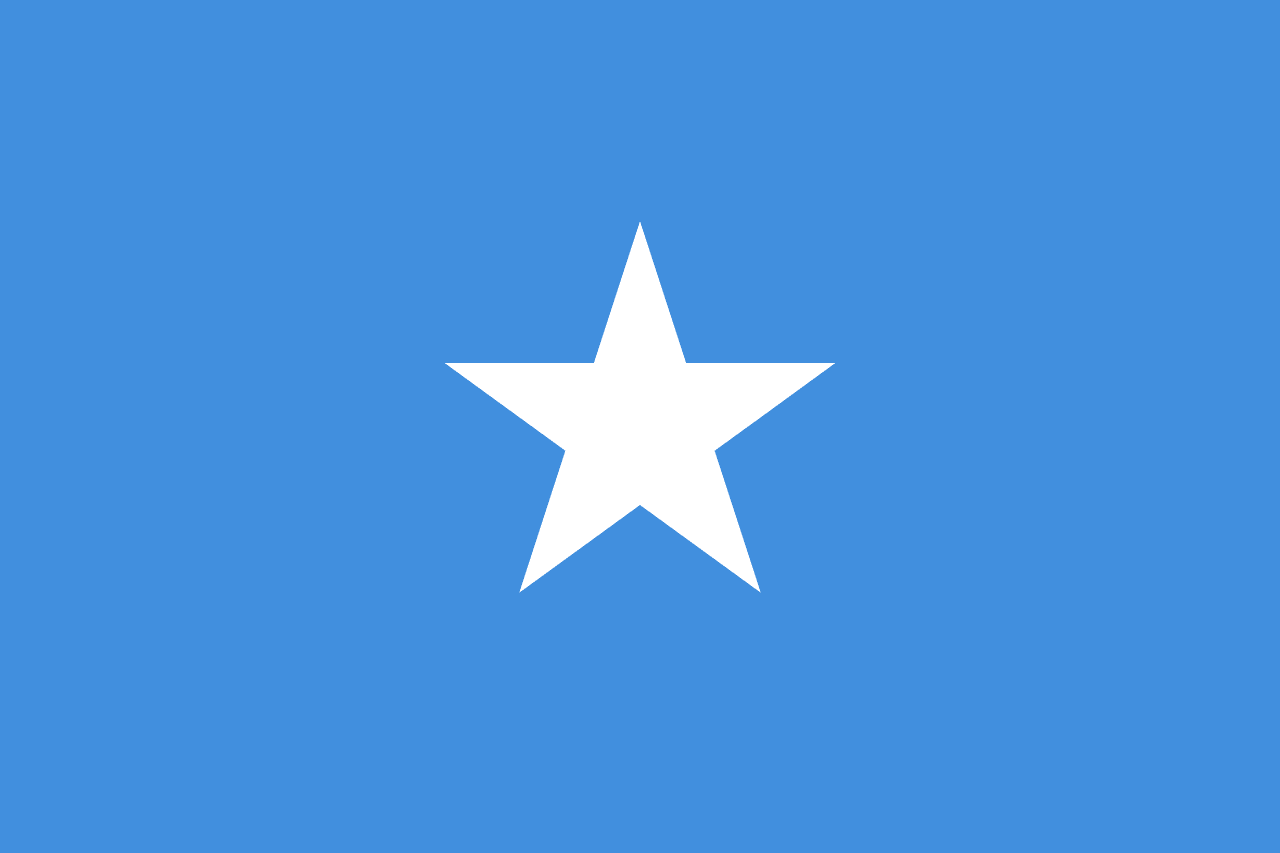
Somalia
Africa
A light blue field with a white five-pointed star in the center, representing the United Nations that helped Somalia achieve independence, the sky and Indian Ocean surrounding the Horn of Africa, and the five historical regions of Greater Somalia united under one symbol.
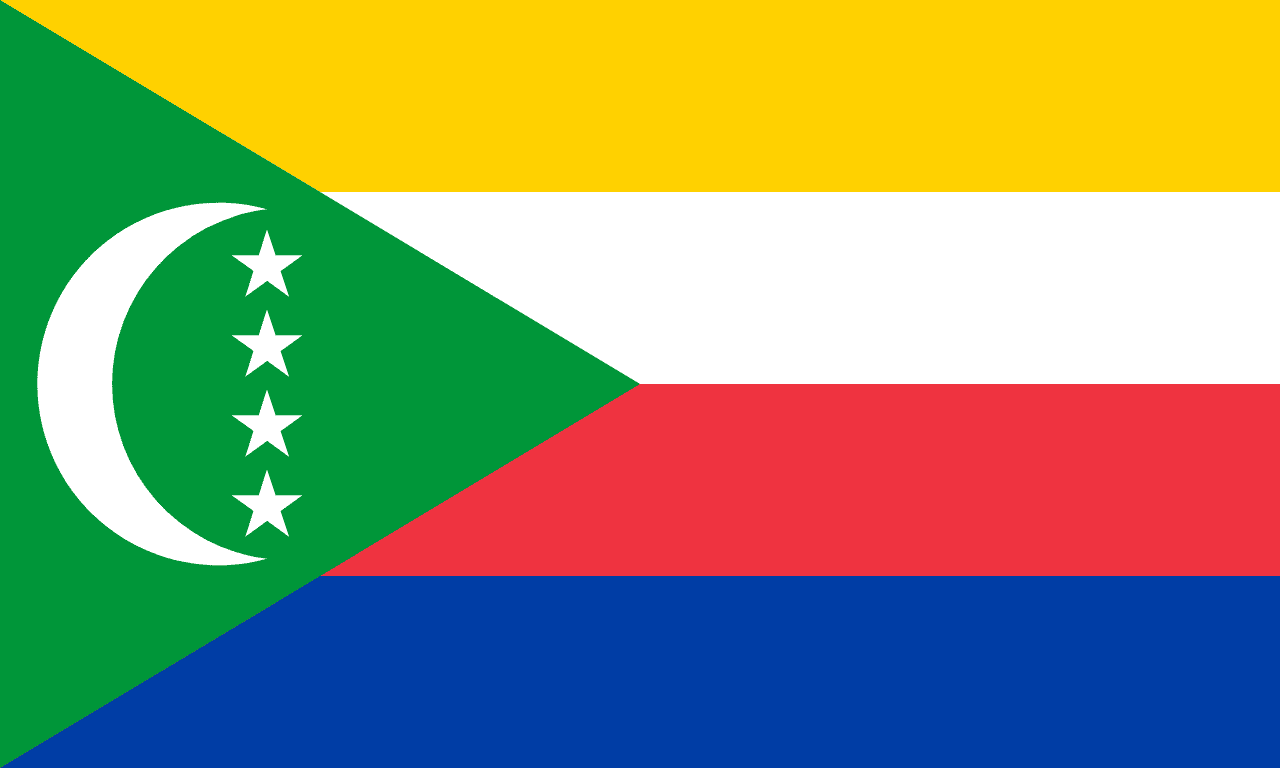
Comoros
Africa
Four horizontal stripes of yellow, white, red, and blue with a green triangle at the hoist containing a white crescent and four white stars, representing the four islands, Islamic faith, and the pan-African heritage of this Indian Ocean archipelago.
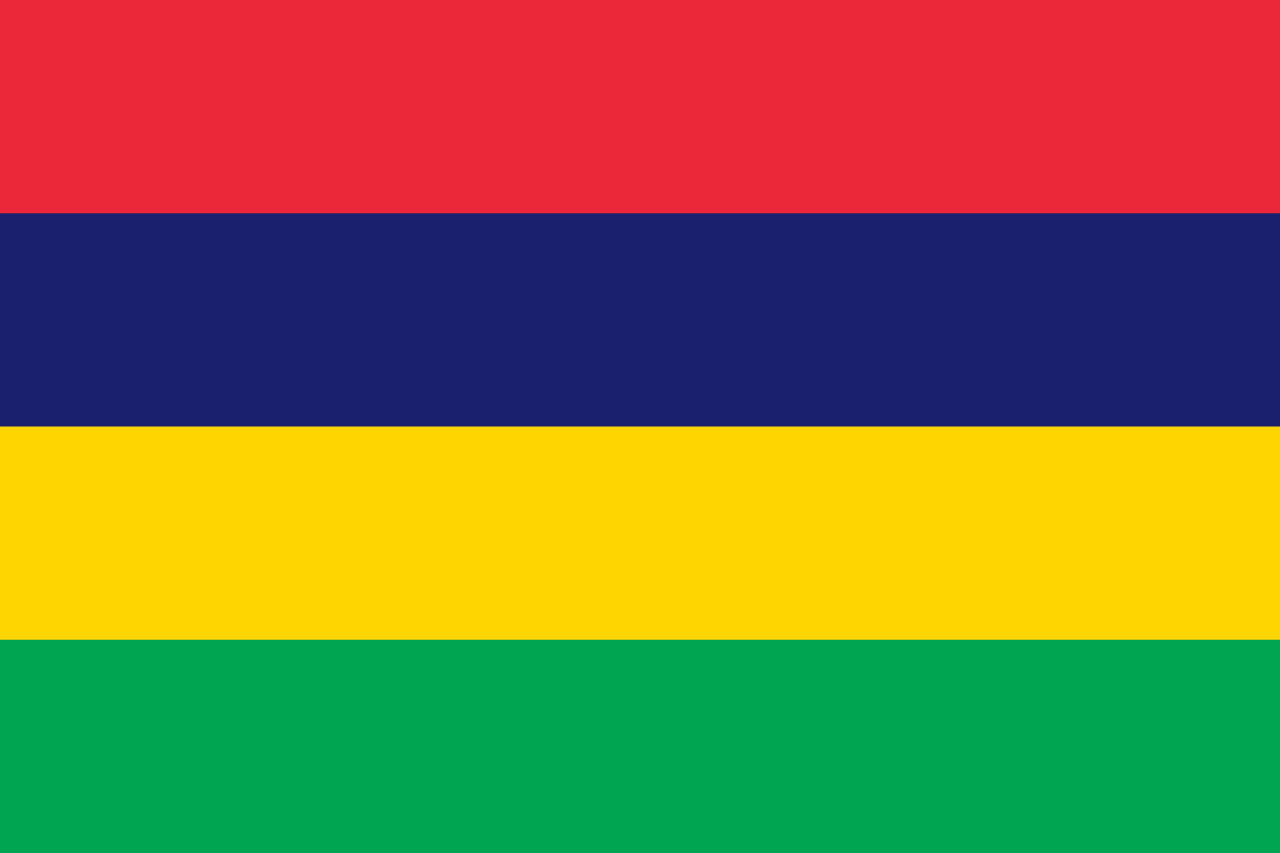
Mauritius
Africa
Four horizontal stripes of red, blue, yellow, and green representing the struggle for independence, the Indian Ocean, the bright future, and the lush vegetation of this successful island democracy.
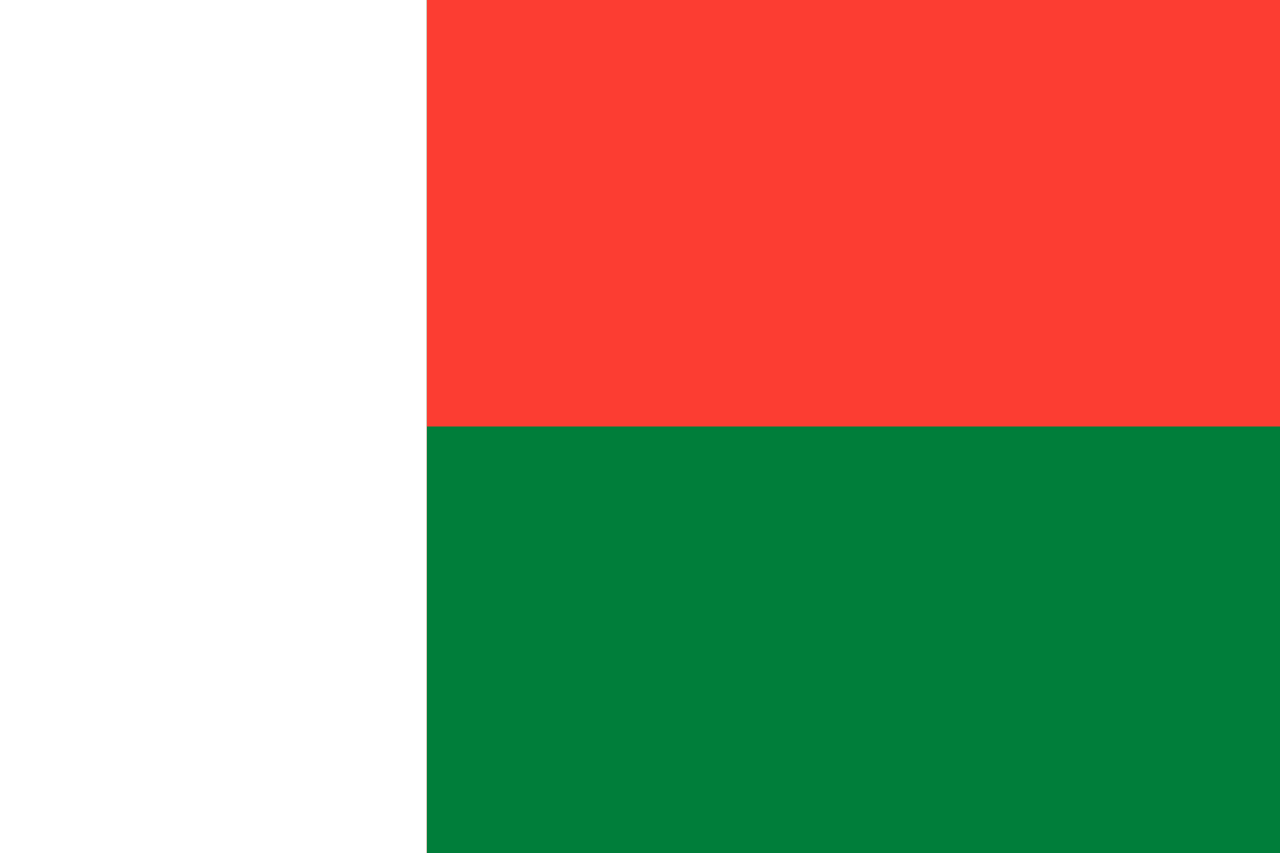
Madagascar
Africa
A white vertical stripe on the hoist side with two horizontal stripes of red and green on the fly side, representing the diverse heritage of the Malagasy people and the unique natural environment of the world's fourth-largest island.
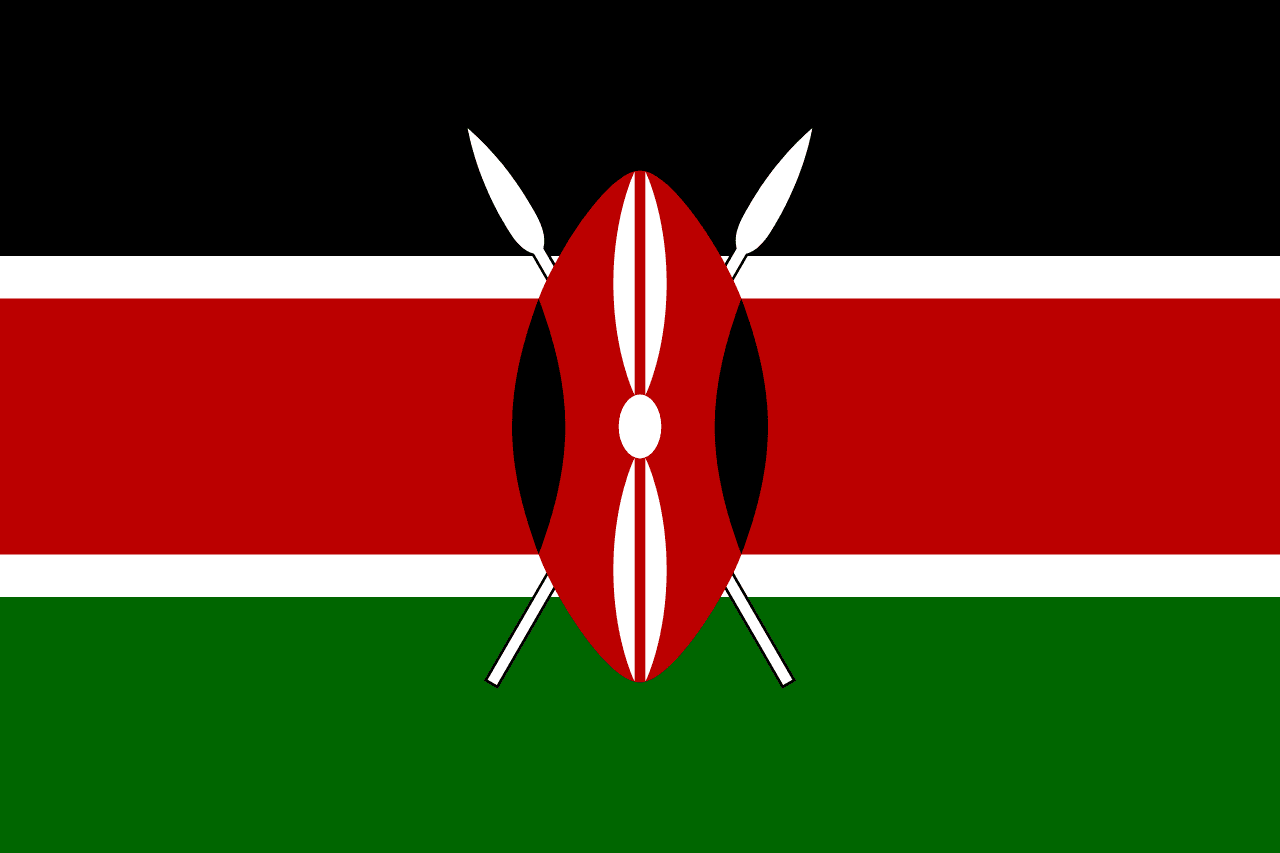
Kenya
Africa
Three horizontal stripes of black, red, and green separated by narrow white stripes, with a traditional Maasai shield and two crossed spears centered on the flag, representing Kenya's struggle for independence and the defense of freedom.
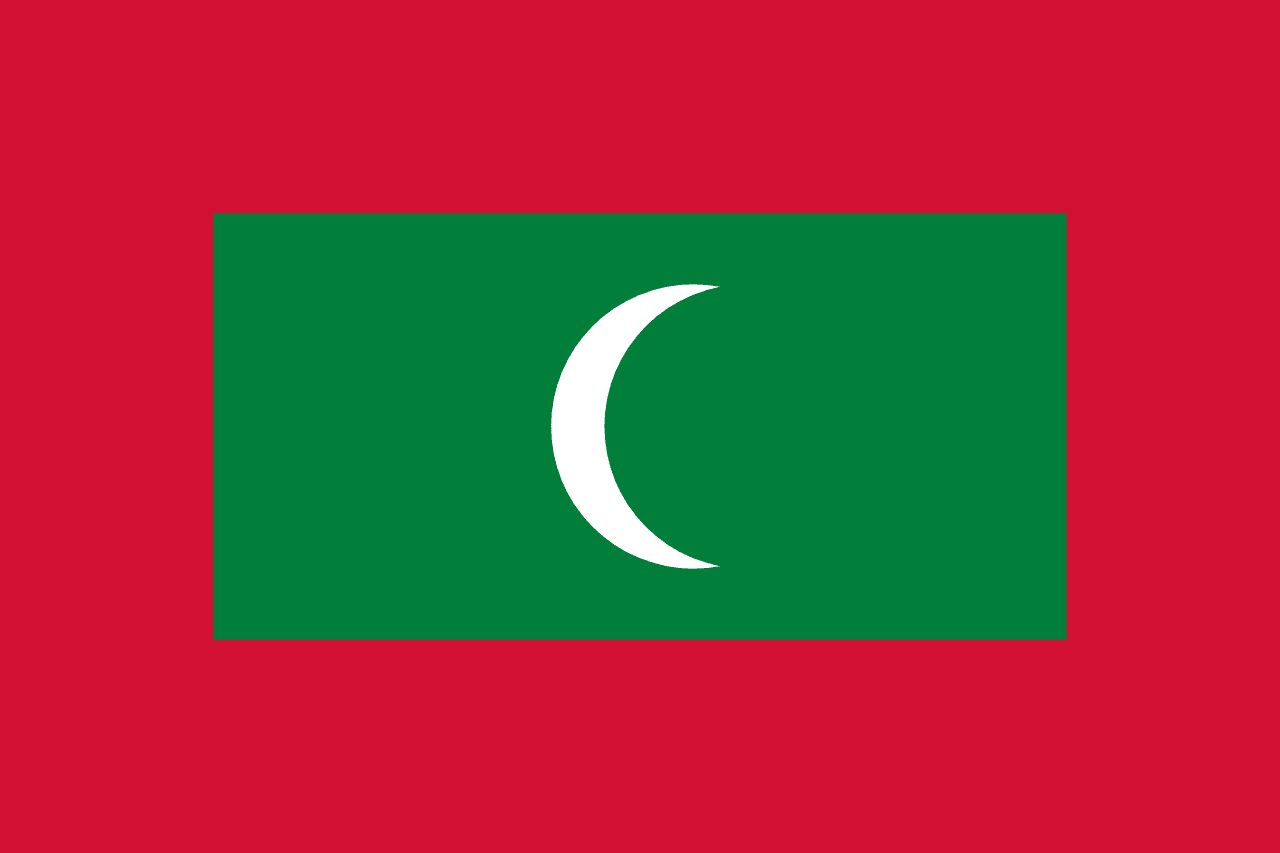
Maldives
Asia
A green rectangle centered on a red field with a white crescent facing the hoist, representing Islam, the peace of the islands, and the blood of heroes who defended this coral atoll nation in the Indian Ocean.